
This TRAM equipped A-6E carries unusual desert camouflage, applied for Operation
Desert Storm, where VA-36 Roadrunners operating from the Red Sea were able to penetrate
deep into Iraqi territory, on "Scud Busting" missions. As armament I have added Snakeye
conventional bombs and Rockeye cluster bombs.
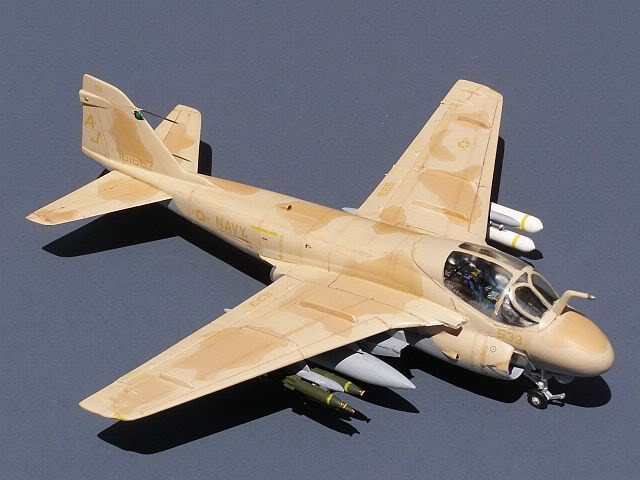
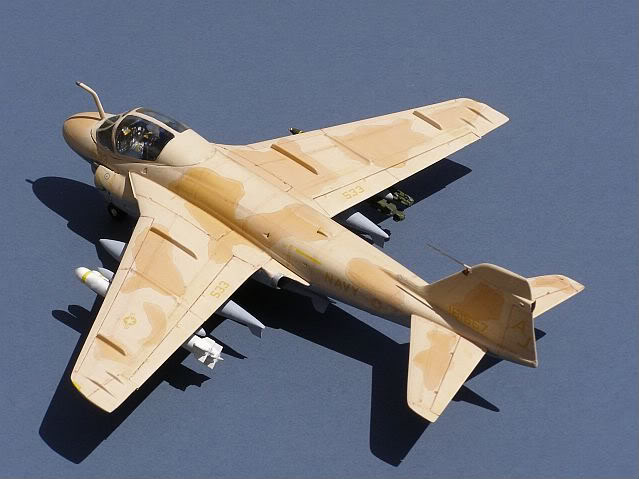

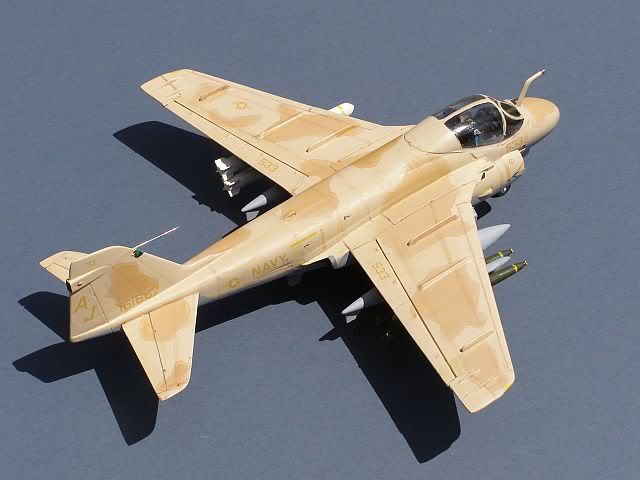
Grumman E-2C Hawkeye, VAW-123 "Screwtops", USS AMERICA, Red Sea, January 1991.
This particular kit is made by Chinese company Lee and bears a very strong resemblance
of the Fujimi kit. It is the same kit that you can find in Heller boxes with French
markings, although this one came from a bookshop at less than half the Heller price.
Link to build page
Grumman's E-2 has remained in front line service since 1964, steadily evolving as
new technology has become available. With its distinctive rotating radar, the Hawkeye
is one of the most complex and largest aircraft ever to serve onboard an aircraft
carrier. Its primary role is the control and direction of fighter and strike aircraft
at a distance from the Carrier Group, but it can also act in surface surveillance,
SAR and communications network relay roles, with Hawkeyes providing a key component
of the US Navy's Co-operative Engagement Capability (CEC).
This model represents an aircraft of VAW-123 Screwtops Squadron, serving onboard
the USS AMERICA during Operation Desert Storm. E-2s from the AMERICA operated in
both the Red Sea and the Gulf during the war
Vought F-8E Crusader - VF- 162 "The Hunters", USS ORISKANY, Gulf of Tonkin, Vietnam,
1966
The Hasegawa Crusader is a reasonable model that assembles without drama and looks
good when finished. It really isn't up to modern standards, since panel lines are
discretely raised, whilst cockpit detail and the ejector seat are very basic. The
very prominent intake is also a gaping see-through hole into the fuselage. The kit
provides the option to raise the wing, but not to lower flaps and slats - unfortunately
one was not possible without the other on the real thing, but it is such an unique
feature on this type that it would be a shame to omit it. Alternative decals are
provided for a US Marines aircraft with additional pylons and bomb load for the ground
attack role Link to build page

Having produced one of the most successful naval aircraft of WW2 (the F-4U Corsair),
Vought went through a difficult patch in the early 1950s, with several innovative
designs failing to make an impact. A government-directed factory move from the east
coast to the west coast to reduce national strategic vulnerabilities did not help,
but Vought fought back spectacularly with the superb F-8 Crusader design, the USN's
last aircraft designed with gun armament as its main weapon. An innovative wing design
could change incidence to assist landing, yet allowed supesonic flight.

After a remarkably short and successful development period, the Crusader gave excellent
service particularly throughout the Cuba Crisis and Vietnam War, then in its reconnaissance
role, right into the late 1980s. At 19:3, the Crusader would be credited with the
best kill ratio of any American type in the Vietnam War, althogh a total of 170 Crusaders
would be lost to other causes, including AA fire during the war.
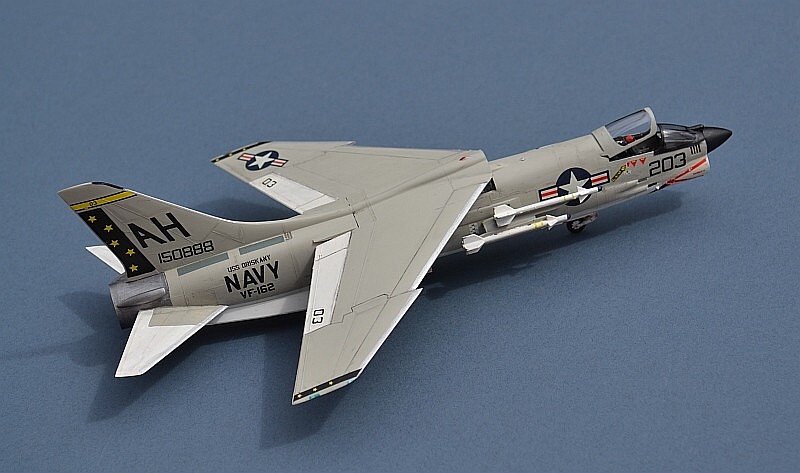

Despite the variable incidence wing, Crusaders were notoriously dififcult to land
on a carrier - large ventral strakes were added to improve directional stability,
but castoring and very soft nose gear arrangements made any landing an alarming sight
with the aircraft swerving along the deck with its cockpit close to the ground.
Ling Temco Vought A-7A Corsair - VA-153 "Blue Tail Flies", USS ORISKANY,
Gulf of Tonkin, Vietnam, 1966
Hasegawa's Corsair kit is even older than their Crusader and dates from the period
of collaboration with Frog, whose style it closely matches. Despite a "chunky" feel,
it is well engineered and easy to build, but detail is very sparse, particularly
around the cockpit (a blob-like seat only) and nose (which ends in a blank wall about
1cm into the intake. A large armament load is included, but again is very crude in
detail. I had a lot of difficulty with the declas on this one as they were very translucent,
reluctant to leave the backing paper and split apart when applied.

As combat attrition in Vietnam began to bite, the USN looked to replace A-4 Skyhawk
aircraft losses with a new design. To speed acquisition the design had to be based
on an existing design, leading Douglas to propose an enlarged Skyhawk, North American
an "Super Fury" (one assumes similar to the Super Sabre) and Vought (now owned by
Ling Temco Vought) to propose the winning design; a simplified Crusader derivative.

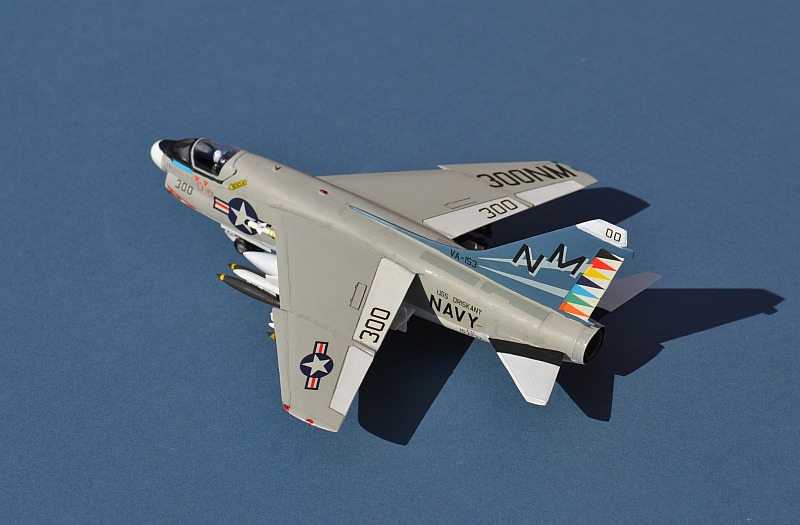
Despite lacking the radar, variable incidence wing and afterburner (supersonic flight
was not needed), the Corsair's family resemblance was clear and was mirrored in its
very short development cycle and operational success. Capable of carrying an incredible
bomb load (more than a WW2 Flying Fortress), Corsairs were also adopted by the USAF,
with aircraft of both services seeing combat in Vietnam toward the end of the war
and remaining in front-line service with the USN until the end of the first Gulf
War in 1991.
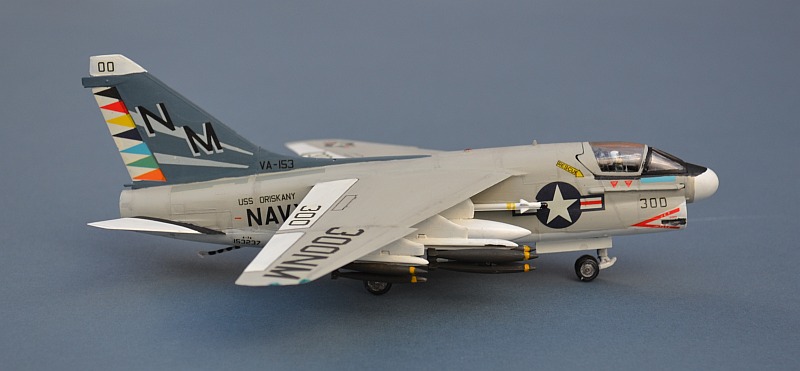
Grumman F-14 Tomcat - VF-14 Tophatters US Navy, USS John F Kennedy, Spithead, Portsmouth
UK 1976.
Another e-bay impulse cheapy buy. Italeri's Tomcat is a nice kit, albeit with raised
panel lines. Watch how you attach the main gear legs though - the fixing hole goes
straight through, such that your carefully assembled pivoting wing can easily become
fixed! The kit supplied decals are very grey and unimaginative. I much prefer the
1970s grey white USN schemes, so these colourful Modeldecal markings from the stash
replaced them.
The Tomcat was probably the ultimate Fleet Fighter; a key component of NATO's naval
forces throughout the late 70s , 80s and 90s. Tomcats, with their long range air
to air AIM-54 Phoenix missiles provided the outer layer of air defence.
Nevertheless, times move on; not only were the Tomcat's systems and airframes becoming
long in the tooth, but the end of the Cold War left it without a realistic role.
The final Tomcat variant attempted to overcome this by giving it a ground attack
capability (the "Bombcat"), but its days were numbered. Iran continues to operate
locally modified F-14s in air defence and strike roles.
McDonnell Douglas F4H-1 (F-4B) Phantom II, VF-74, USS Forrestal, Vietnam 1967
The Airfix Phantom is certainly not the best kit 1/72 Phantom kit available, but
it is cheap and colourful ! This one has a Fujimi canopy fitted as its own was missing;
this gives the fuselage a bit more volume, which looks much better in my opinion.
Much to my surprise, it is actually quite a pleasant, well fitting kit and the decals
were very effective; tough, but thin and stretchy - which is needed for that large
red bit (incidentally it isn't blotchy like that in real life - seems to be JPEG
compression artefacts).
Link to Phantoms Pages
The Phantom was (and still is) a superlative aircraft in all respects. This early
USN aircraft is marked for an aircraft of VF-74, present onboard the USS Forrestal
at the time of its horrific flight deck fire, during operations of the Vietnamese
coast. Zuni rockets from an aircraft parked on deck fired accidentally, setting fire
to a large number of armed aircraft on deck. Many fight deck crew were killed and
injured whilst fighting the massive fire and explosions that followed.
North American FJ-4B Fury, VA-126 US Navy, NAS Miramar, 1961.
In many respects, the US Navy's Fury looks like an F-86 Sabre on steroids, but whilst
it shares a direct family link, it is a very different aircraft.
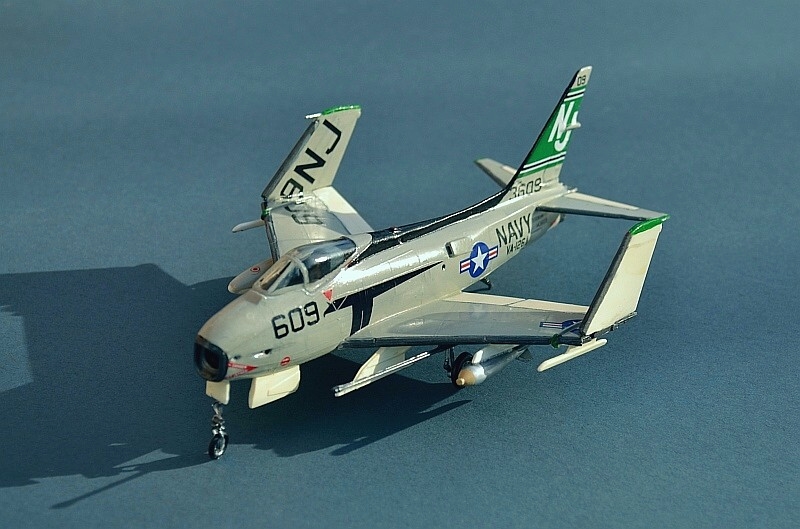
One of the few post-war US Navy fighter aircraft never to have fired a shot in anger,
it was a contemporary of the British Scimitar and powered by a licence-built version
of the Armstrong Siddeley Sapphire engine, as used in the Hunter, Javelin and Victor.
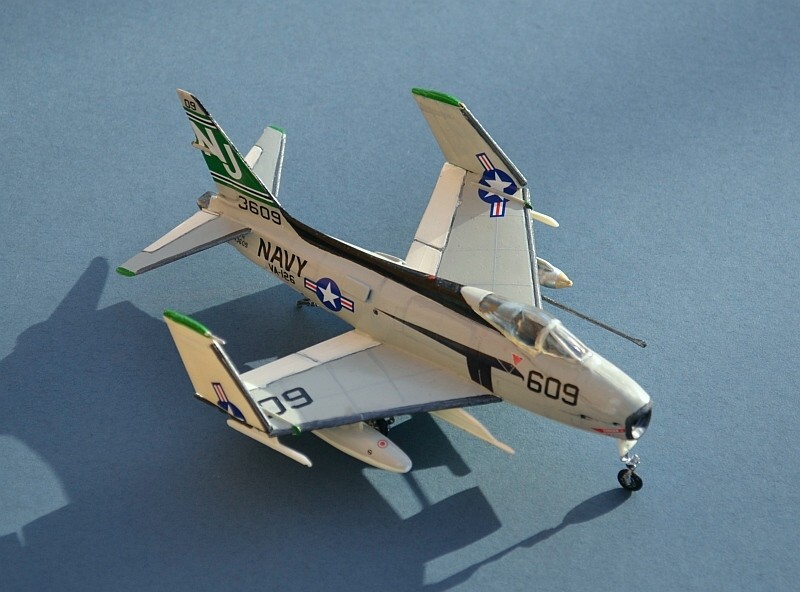
Furies saw little service in the fighter role; like the Scimitar, they were quickly
moved to a strike role, including the ability to carry a Mk.12 Nuclear Weapon on
their port middle pylon.

Friends & Allies - Part 2a - The US Navy 
Grumman A-6E Intruder - VA-36 "Roadrunners"
USS Theodore Roosevelt, Op Desert Storm, 1991
An old Frog release of a Hasegawa mould, with minor alterations and after-market
transfers from High Decal Line. Link to build page
Grumman's Intruder was the main USN carrier based attack aircraft for 33 years, from
1963 to 1996. Seeing combat service in Vietnam, Lebanon, Grenada, Libya and the first
Gulf War, it was specifically designed as a low level penetrator, able to carry a
substantial load of conventional or Nuclear weapons at high subsonic speeds in all
weathers. Indeed, the A-6E variant carried the heaviest offensive load of of any
carrier-based aircraft during its 25 years of service. As a contemporary of the British
Buccaneer, it was equally innovative in its aerodynamics and onboard systems.
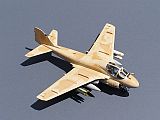
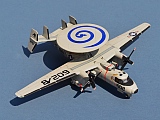

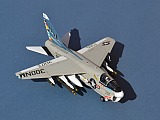

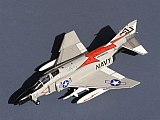
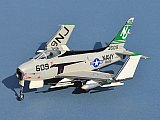
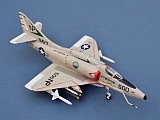
The Douglas Skyhawk was a remarkable aircraft, bucking the Cold War trend toward
ever larger and more complex designs. Lightweight, small and simple, it was nevertheless
able to carry the same weapons load as a WW2 B-17 bomber, at more than twice the
speed.
Although its range was a great deal less than a B-17, the ability to operate from
an aircraft carrier close to the action made this irrelevant.
Skyhawks, or “Scooters” as they were affectionately known, took the brunt of the
US Navy and US Marines’ initial efforts in Vietnam, with over 326 lost to combat.
The initial A-4 models were superseded by the advanced A-4E/F with longer nose, more
powerful engine, additional weapons pylons and improved avionics (including a distinctive
hump on the top of the fuselage). Over 2,960 were built between 1954 and 1979, with
many remaining in service into the 21st Century.
Douglas A-4F Skyhawk, VA-55 US Navy, USS HANCOCK, Vietnam, 1973.
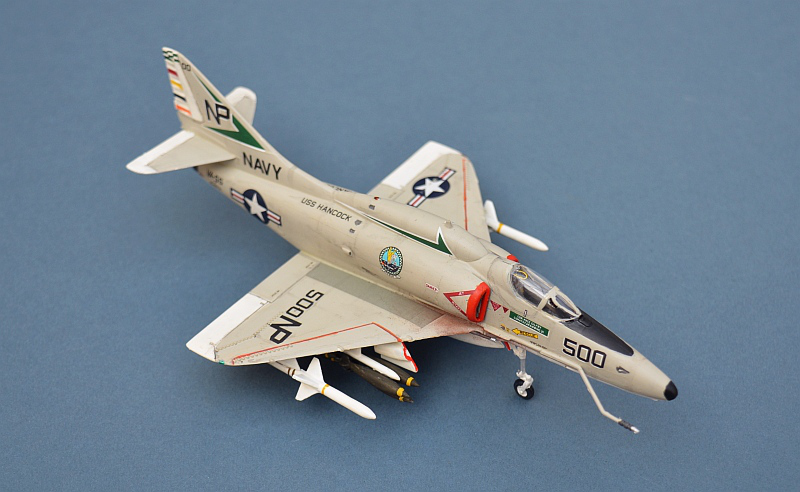
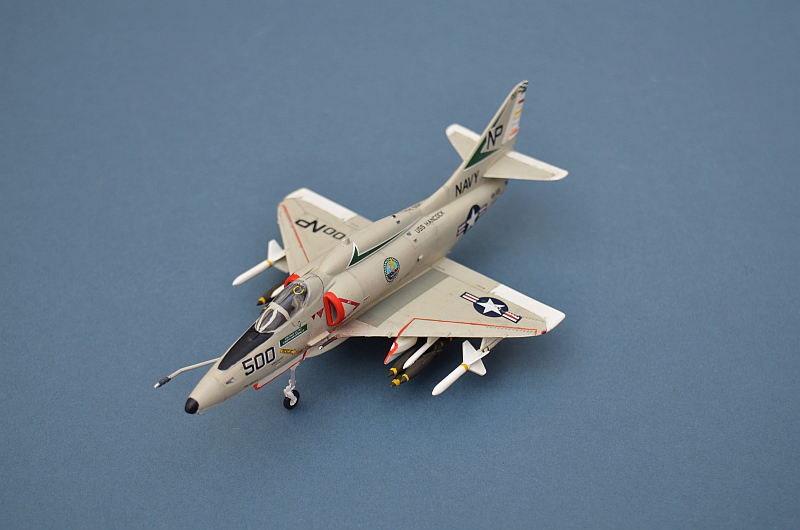

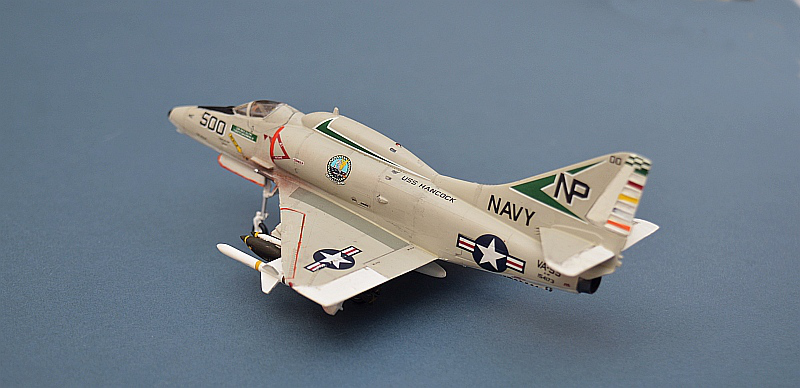

The earlier Skyhawks carried a much lower payload, with only two weapons pylons ,
a much shorter nose and a less powerful engine. INTREPID’s A-4s participated in many
of the early strikes of the Vietnam conflict, operating in the North at Yankee Station,
and the South at Dixie Station.
Douglas A-4B Skyhawk, VA-15 US Navy, USS INTREPID, Vietnam, 1967.
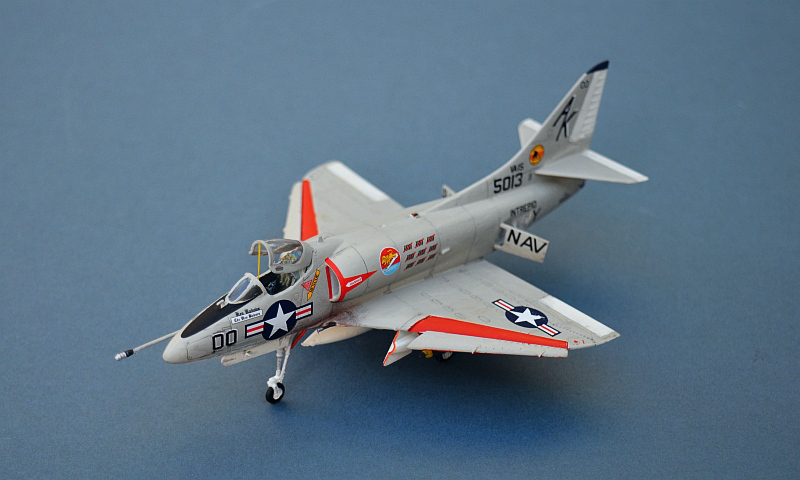
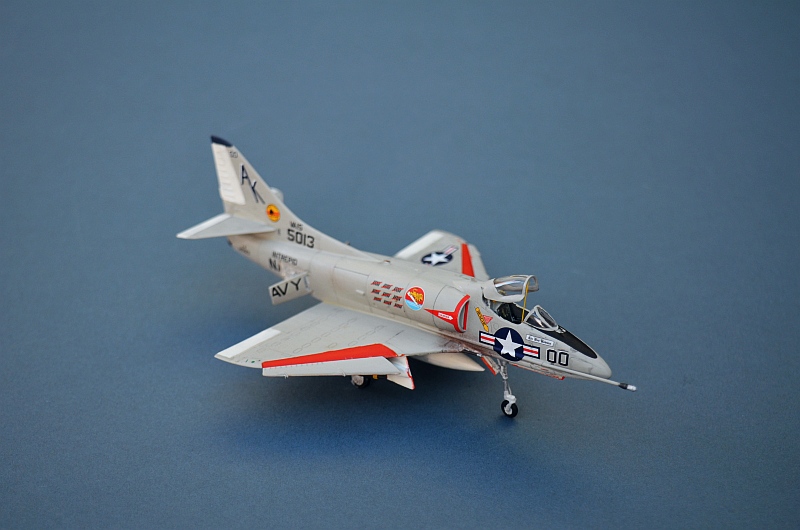


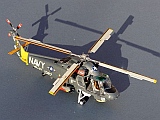
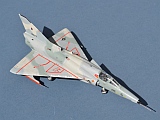
The USN and USMC operate a number of Aggressor aircraft for the purposes of Dissimilar
Air Combat training. Between 1985 and 1988, VF-43 at Oceana air station was equipped
with 12 ex-IDF Kfir C.1 aircraft, used to simulate the MiG-23. The aircraft were
painted in colour schemes intended to simulate potential adversaries and modified
to include small forward shoulder canards and enlarged nose strakes, significantly
improving their manoeuvrability and turning performance.
Israel Aircraft Industries F-21A Lion (Kfir C.1), VF-43 Challengers, USN, NAS Oceana,
1986.
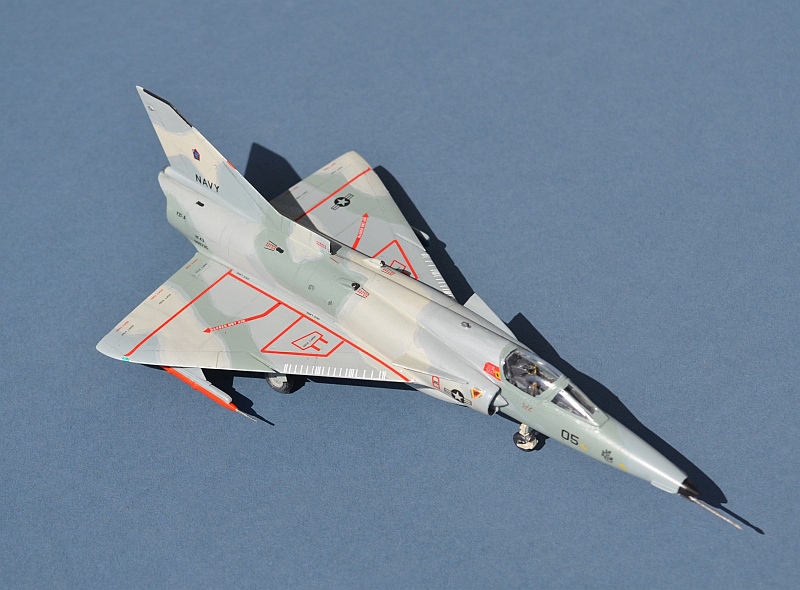
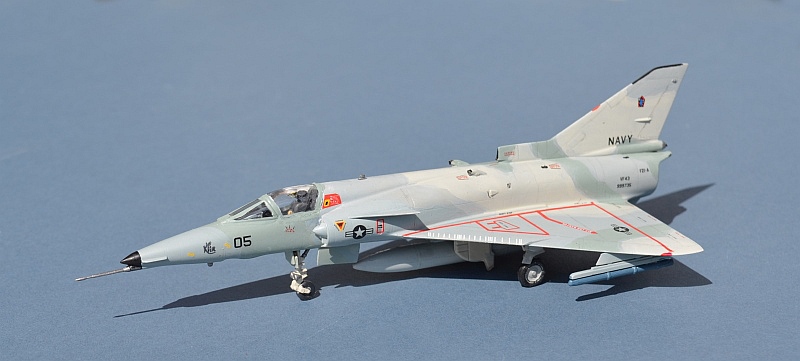

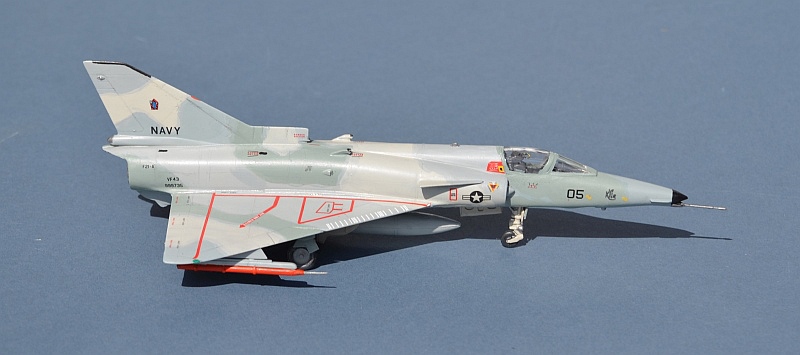

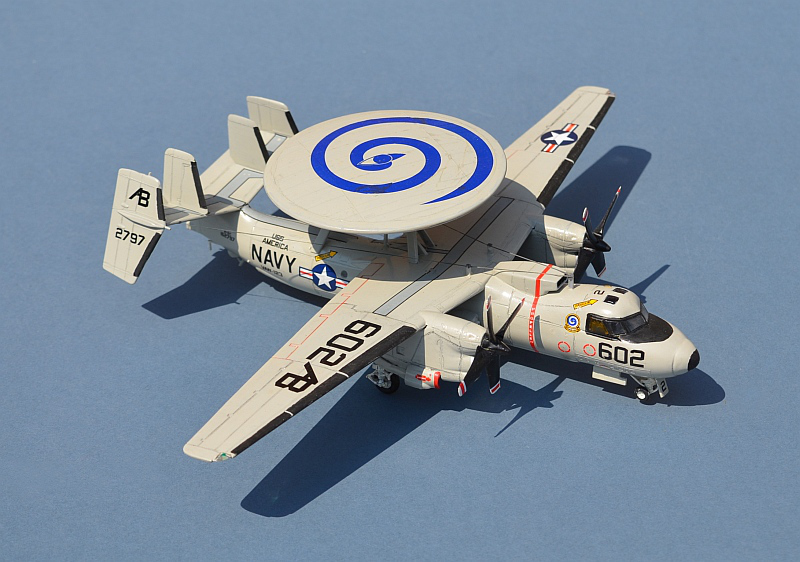



The Douglas SBD Dauntless was the US Navy’s main dive bomber at the start of WW2.
A robust and capable aircraft, it earned its place in the list of key weapons of
WW2 and most important naval aircraft of all time by virtue of its performance at
the Battle of Midway, where dive bombers from the US carriers Yorktown, Enterprise
and Hornet destroyed much of the Imperial Japanese Navy’s carrier fleet, sinking
the Japanese carriers Akagi, Hiryu, Soryu and Kaga, thus changing the direction of
the Pacific war in one fell swoop.
Casualties were severe on both sides, with nearly 3,500 killed, mostly Japanese.
The scale of the Japanese defeat was so severe that it was kept hidden from the
Japanese people and all but senior Japanese military staff. Sadly, despite playing
a critical role in thebattle and fighting furiously to stay afloat after damage,
the USS YORKTOWN was one of those casualties, succumbing to dive bombing and finally
to two torpedoes, with the loss of 141 men.
Douglas SBD-3 Dauntless VS-5 USS YORKTOWN, Battle of Midway, June 1942.


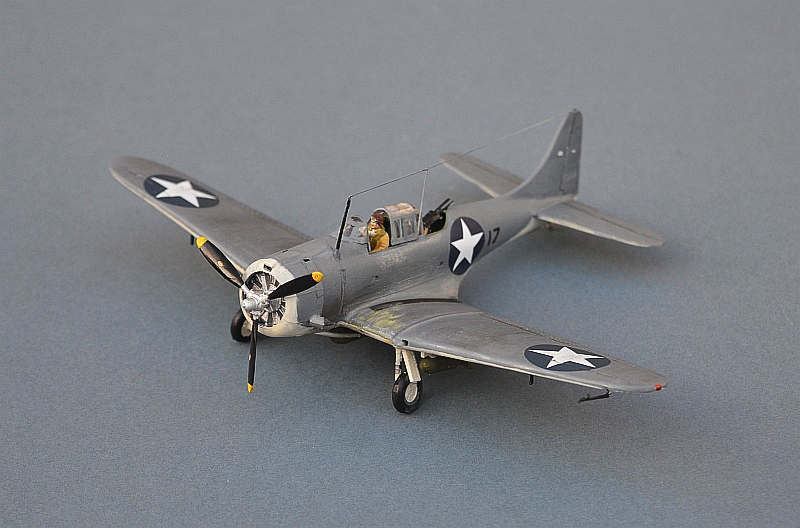
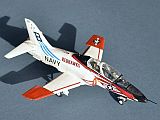
Boeing/BAESYSTEMS T-45C Goshawk - VT-21 "Redhawks"
Training Wing 2, NAS Kingsville, Texas, 2011
This is the Italeri T-45. As supplied, the lmkit represents an early demonstrator.
For my buiild I have added modifications to the wings (squared tips, leading edge
slats and trailing edge flps), squared tailplanes, new ventral fin and glass cockpit
decals. After-market transfers came from Caracal Models. Link to build page
The Goshawk entered US Navy & US Marines service in the early 1990s as a replacement
for the T-2 Buckeye and TA-4 Skyhawk. A heavily modified variant of the BAESYSTEMS
Hawk, developed for carrier use by McDonnell Douglas, it has a strengthened airframe
and undercarriage, modified wing with full length leading edge slats and slotted
flaps, and a tail hook for arrested landings. The most recent version, the T-45C
has a full glass cockpit, replicating the look and feel of the F-18 Hornet. A number
of aircraft have also been fitted with synthetic radar to allow training of rear
seat aircrew.

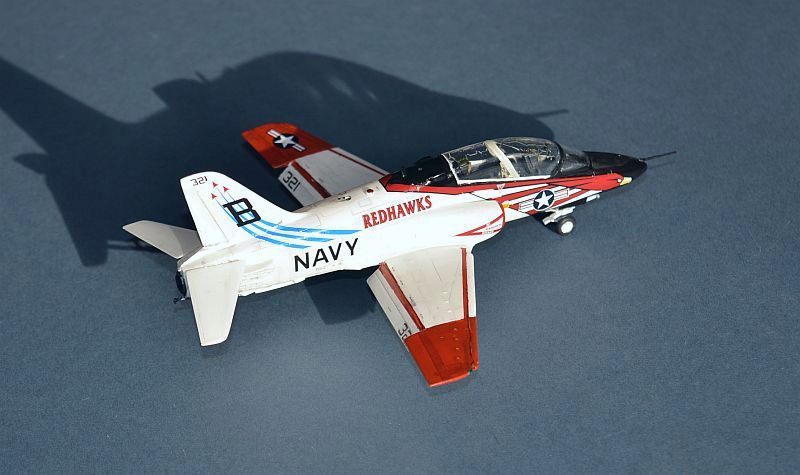
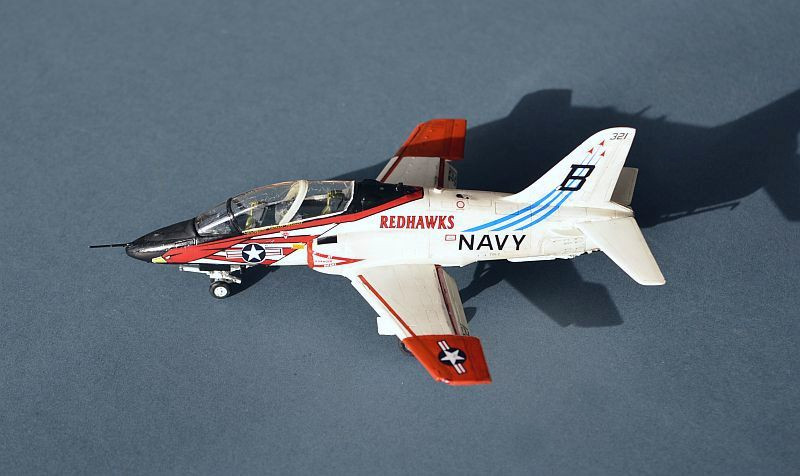

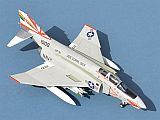
McDonnell Douglas F-4N Phantom II, VF-111 USS Coral Sea, Vietnam 1975
Fujimi’s Phantom kits are generally very good, with easy construction and good detail.
This is the F-4N US Navy version from 1985, with colourful decals for the CAG aircraft
of VF-111 Sundowners, onboard USS Coral Sea at the very end of the Vietnam War.
As is perhaps understandable for a kit of this age, some of its decals disintegrated
when I tried to apply them. Link to Build Page
Link to Phantoms Pages

As the US Navy’s Phantoms began to show their age, a number of update and refurbishment
projects were launched from 1970 onward. Project Bee Line saw 228 F-4B aircraft
stripped back, re-wired and various new systems fitted to make them into the F-4N.
Work included structural strengthening, uprated 30-kVA electrical generation, an
F-4J-style slotted stabilator. Inboard leading-edge flaps were locked shut.. ECM
and RWR antennae were added to the air intakes, under the wings and on the tip of
the tailplane. Other changes included a helmet sight System and Sidewinder Expanded
Acquisition Mode, plus a new dogfighting computer , auto-altitude reporting equipment.
New IFF and a one-way datalink. The J79-GE-8 engines of the were updated to include
smoke abatement equipment.
A similar but more extensive project for the F-4J saw combat leading edge flaps and
elements of F-14 Tomcat radar systems fitted to turn the aircraft into the F-4S.




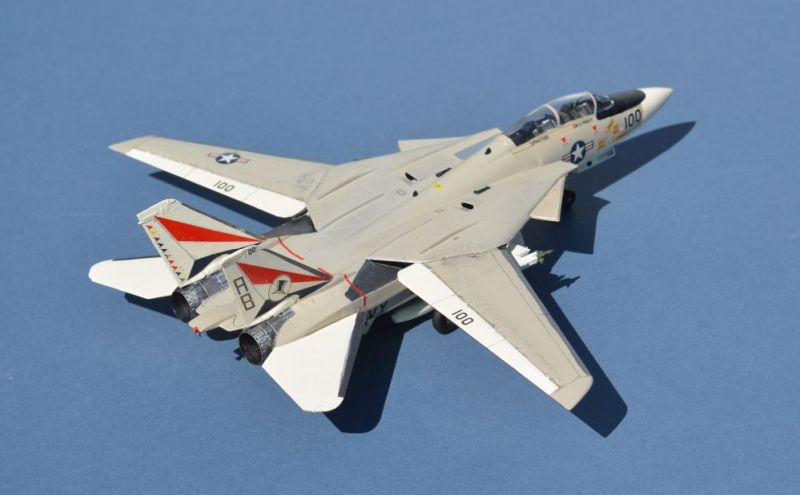
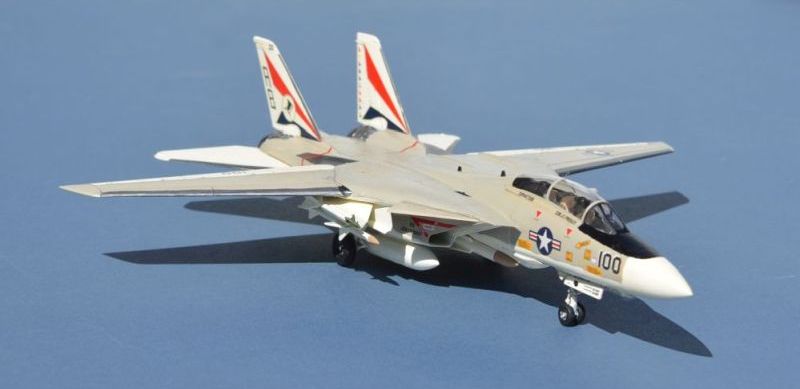
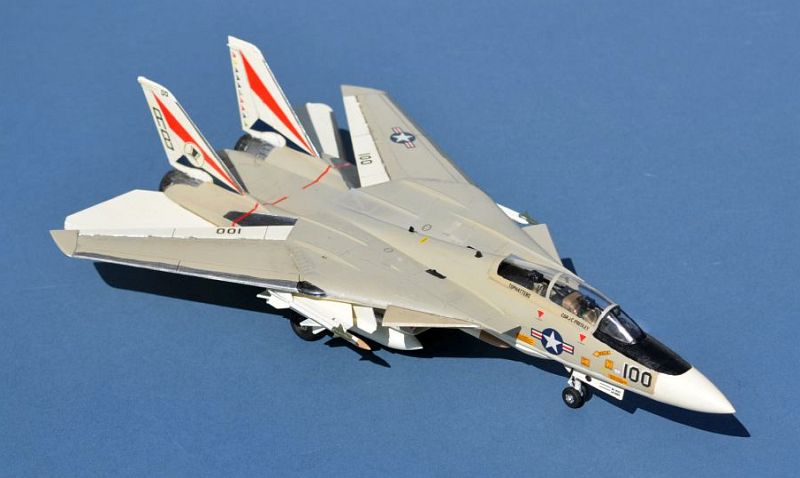

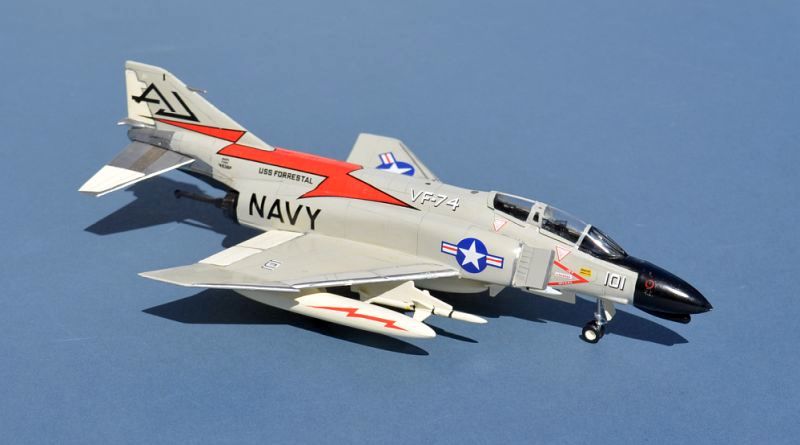
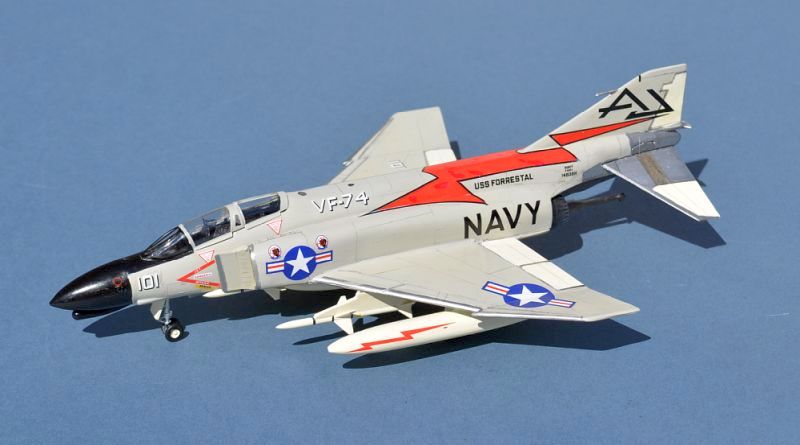

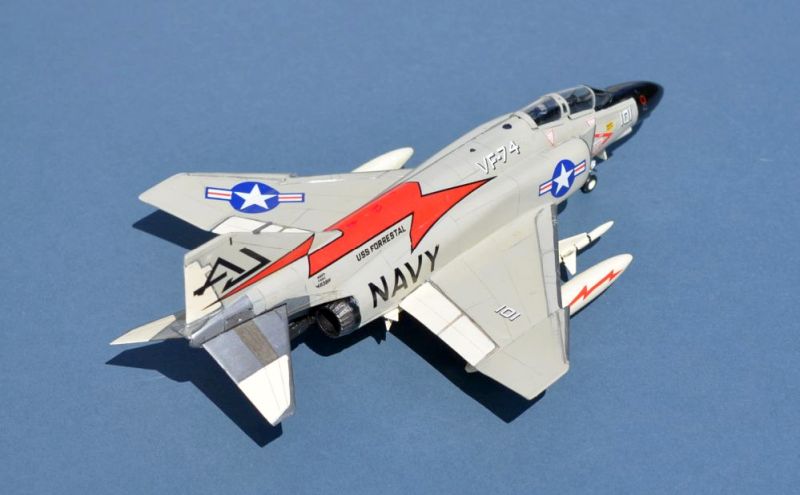
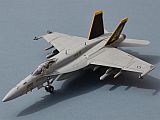
Boeing F/A-18E Super Hornet - VFA-115 "Eagles"
USS Ronald Reagan, Gulf 2006
This is the Italeri F/A-18E in its Tamiya issue. As supplied, the kit represents
an early demonstrator that requires some small modifications, including th e”Pizza
Box” IFF panel on the nose, filling of the air brake between the tails and closure
of the LERX vents. These are Superscale after market decals Link to build page
The McDonnell Douglas (now Boeing) F/A-18 Hornet has served with the US Navy and
US Marines since the early 1980s, seeing combat against Libya, in the Gulf and over
the skies of Bosnia and Kosovo.
After serving alongside each other for several years, first generation aircraft were
withdrawn from Carrier operations in 2018, to be replaced by the F/A-18 E/F Super
Hornet. The Super Hornet looks similar, but is effectively a new aircraft, with an
airframe 25% larger, more powerful engines, increased fuel capacity and a significantly
improved sensor/radar suite. A far larger Leading Edge Root Extension (LERX) improves
maneouvering characteristics, mathced with larger squarer air intakes and an intake
ramp.
The single seat F/A-18E fighter variant is complimented by a twin seater (The F/A-18F)
that has replaced the F-14 Tomcat, with the second seat occupied by an RSO/Weapons
controller/Battle Manager.
Super Hornets have also been equipped as air to air refuellers to replace the S-3B
Viking and in the form of the EA-18G "Growler" as ESM/EW aircraft to replace the
EA-6B Prowler.
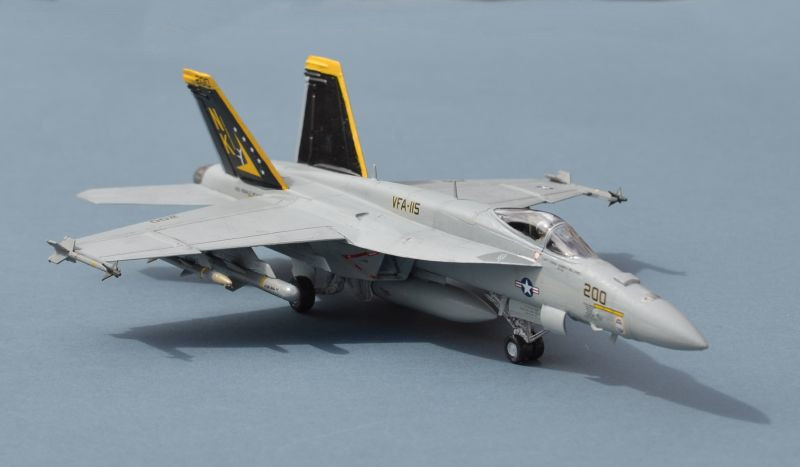




Lockheed Martin F-35C Lightning II Joint Strike Fighter VA-101 “Grim Reapers”
Joint Base Eglin, Florida 2015
This is Orange Hobby’s first injection moulded aircraft kit and it matches well to
the other F-35s on the market. Link to build page
The F-35C (Lightning II) is the conventional carrier-based variant of the F-35 family.
Despite a very high level of commonality with the other variants, its significantly
larger folding wing, arrestor hook and nose wheel catapult attachments, as well as
twin nose-wheel and larger control surfaces give it better control at lower carrier
landing speeds and its range and/or payload are higher than the A and B variants.
The US Navy and US Marines are currently (and seem set to remain) the sole operators
of the F-35C variant, with 235 on order. Full Operational Capability (FOC) was declared
in February 2019, with USMC F-35Cs of VMFA 314 embarked in USS Abraham Lincoln,
undertaking the first F-35C combat missions in November 2024, conducting multiple
strikes on Houthi weapons storage facilities in Yemen.
VFA-101 was one of two F-35C squadrons established in 2012 as a Fleet Replacement
Squadron, training pilots for the US Pacific Fleet. It was de-established in 2019
and merged with VFA125 “Rough Raiders” at Naval Air Station Lemoore in California



 Main Index
Main Index
















![]()



























































